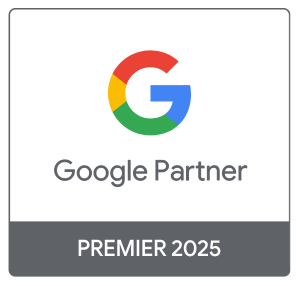Having a website for your business isn’t just a handy feature or a bonus like it used to be. Today, it’s absolutely necessary, like being listed in the phone book or having a sign on your door. The more our society shifts in a digital direction, the more your website has to stand out amongst the litany of dental practices with an online presence. Once your website is up and running, take a look at this blog post for tips on digital strategies you can use to help drive traffic to your awesome new website.
Now, the good news is that the vast majority of dental websites out there aren’t all that effective. The bad news is yours might be one of that majority. The best news is that with a little bit of time and energy, you can create an eye-catching, high-performing website to help you grow your patient base and keep your appointment book full.
These are the three basic ingredients your website needs to facilitate your success.
Great Design Makes a Good First Impression
They say you only have one chance at a first impression, and when it comes to websites, that first impression is very very short. You only have between 3 and 5 seconds to convince someone that your site is worth looking at before they decide to look somewhere else.
Colours & Imagery
Make sure your colours are modern and easy to look at. Your site colours should tie-in to your logo, so if your logo is lemon-yellow and lavender, you should consider a rebrand.
Using interesting and inviting imagery is another good idea. If possible, avoid images that users might consider gross or cringey, like a particularly nasty rotten tooth. But at the same time, you don’t necessarily want images that are too stock-photo-safe. Try to find a balance between approachable and unique.
Layout
Just like with your image choices, your layout relies heavily on balance. You don’t want your website to look cluttered and messy, but you don’t want it to look sparse and empty either. Use negative space strategically, and avoid piling content and images on top of each other like an essay. Instead, you can put text and images side by side, and put sections on both sides of the screen. Expandable sections are another great way to keep your page from looking cluttered or overwhelming.
Make Your Site Mobile Screen-Friendly
As of 2018’s third quarter, 52.4% percent of global internet traffic comes from a mobile device. You could have the prettiest site in the world; if it doesn’t display properly on an iPhone, it can’t help you.
We use the term responsiveness when talking about how well a site translates on different devices. Making sure your site is mobile responsive will give the user a much better experience, increase the chance of them sticking around, and ultimately, can help you stand out against your competitors.
Answer User Questions With Content
When it comes to websites, the word content really refers to anything that delivers information, including text, infographics, and videos; however, in most cases, we use the content to describe your website’s text.

Stop Keyword Stuffing
Lots of businesses use an outdated search engine optimization strategy that I call keyword stuffing when writing their content. Keyword stuffing means shoving as many potential search terms into each sentence as possible. For example:
“At XYZ Dentistry, our Southeast Calgary dentists offer general dentistry for children and your whole family. Our experienced general dentists can help you with all your cosmetic dentistry needs in Southeast Calgary.”
It’s not pretty, is it?
This used to make a website more likely to come up for a wider range of searches on Google. But Google has since changed their ranking criteria; switching their focus to address user intent. That is to say, Google has started asking the question “Does this website give the user what they’re looking for?”
Your Audience Wants the Short Answer
When was the last time you actually read an entire web page word for word? Can’t remember? Don’t worry, it’s normal. People interact with digital content differently; we look for small chunks that look interesting and relevant to what we’re after and we skim through it.
That means we need to keep content short, digestible, and easy to navigate. Keep paragraphs in the 3 or 4 sentence range. Separate each section with clear and relevant headlines. And remember, you’re writing for patients rather than doctors. Keep your information simple, general, and free from medical jargon as much as possible.
So for example, a web page about Pediatric dentistry might look like this:
- An opening section saying that you offer dental services to children and why the user should consider your practice.
- A section about how often children need a dental exam & cleaning.
- Maybe a section detailing what parents can expect from their child’s dental exam and cleaning.
- If you really need to reference any other information, link to another website that covers it, or encourage users to call your practice with questions.
And that’s it. That’s enough to answer a parent’s questions and assure them that you can do the job properly.
Copy/Pasting Poisons Your Google Ranking
As tempting as it might be to just repurpose content from another website, it’s crucial that you either write your own or hire someone to write it for you. Google is always looking for unique content. If your website is populated with content that Google has already seen, you’ll never rise very high in the rankings.
Performance Matters
A pretty and well-written website is no good if it doesn’t actually work. These performance elements have a huge impact on the success of your website.

Don’t Keep the User Waiting
I’ve already covered the 3-5 second window you have to get a user’s attention. That window makes load time very important, down to the last second. If your site takes 9 seconds to load, you’ve lost your chance to win the user over before you even had a chance to introduce yourself.
Getting the Best Conversion Rate
If you own a car dealership and one of your salespeople consistently underperforms, do you just shrug your shoulders and ignore him? Obviously not; you’d either coach them to help them improve, or replace them with someone who can do the job well. Your website should be treated exactly the same way.
You can measure your website’s performance through something called a conversion rate.
Every time a user does whatever you want them to do (call your practice, request an appointment, order a product) through your website, we call it a conversion. A conversion rate measures how many visits to your site result in conversions. So if 100 people visit your website and 50 of them request an appointment, your site is converting at 50% (which is quite high.)
Once you know how your current site is performing, you can start making changes to improve it. Start experimenting with different text, images, colours, buttons, and placement. Measure the results to determine which combination offers the highest conversion rate. We call process this conversion rate optimization.
So What Are My Website Options?
The way you build your website is up to you. You really have three main options:
- Use a WordPress template or a DIY website like Wix or Square Space to build your own website, write your own copy, and design your own pages.
- Find and source independent graphic designers, copywriters, and web developers to build your custom website for you.
- Work with a marketing agency that employs expert designers, copywriters, and web developers.
Don’t worry, this blog doesn’t end with a sales pitch. You already have enough information to build and optimize a reasonably effective website. But, if you ever decide you want to work with an agency, SmileShop Marketing would love to help you out.






